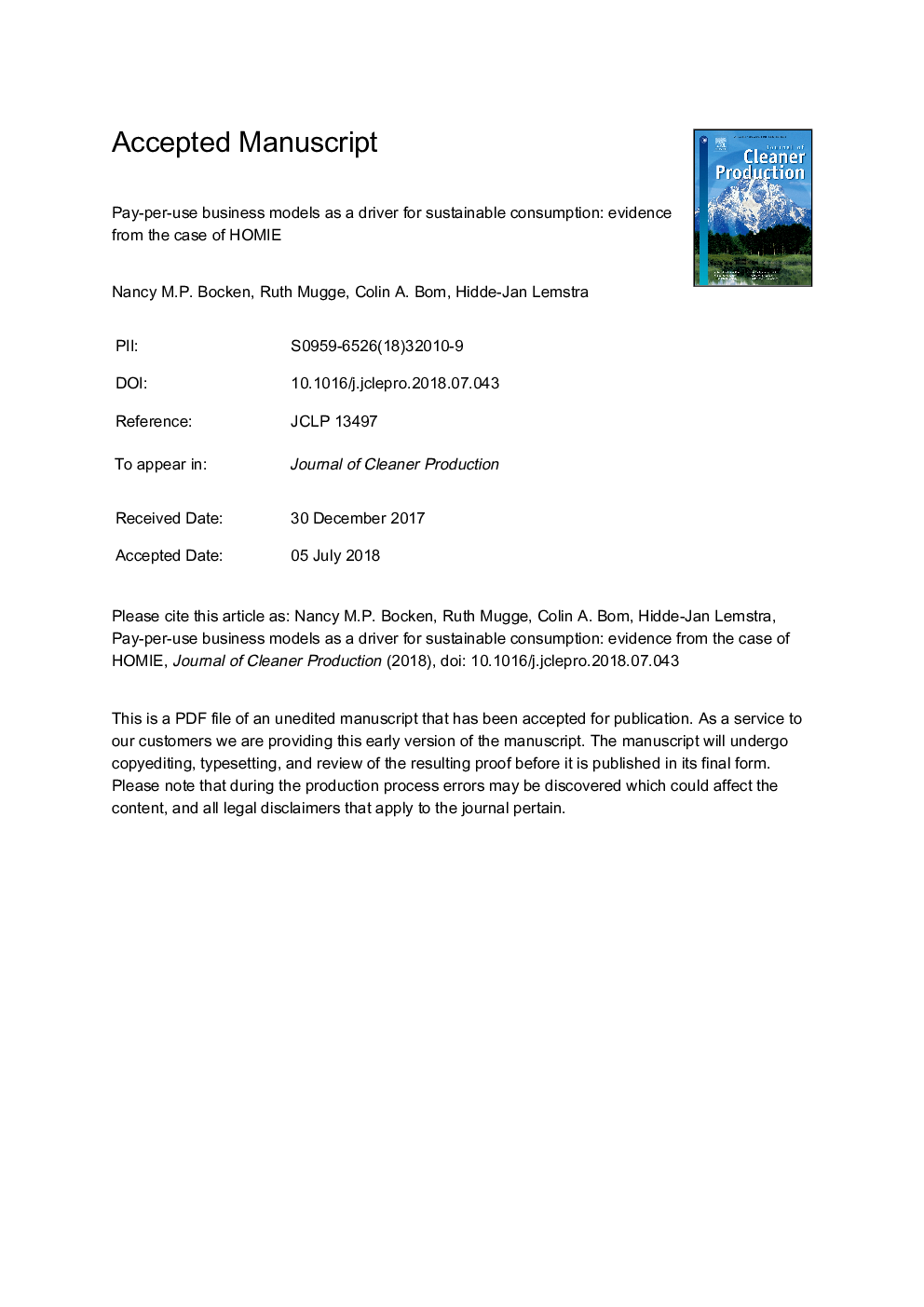| Article ID | Journal | Published Year | Pages | File Type |
|---|---|---|---|---|
| 8093501 | Journal of Cleaner Production | 2018 | 27 Pages |
Abstract
Pay-per-use business models where consumers pay for the unit of service (e.g. a wash) without gaining product ownership are often linked to increased environmental performance. Consumers would become more conscious about consumption patterns and companies would take responsibility for product life cycle issues. Such benefits can only be achieved when the business model is intentionally designed to deliver those impacts. Few studies focus on the environmental impacts of pay-per-use business models based on direct measurement of impacts. This paper investigates the following question: What positive environmental impact in terms of improving consumption patterns can be observed in a pay-per-use business model? Through an in-depth case of the start-up HOMIE, we investigate how its pay-per-use business model contributes to sustainable consumption. We use two samples of 56 and 21 customers in a longitudinal study to assess whether their consumption patterns of using a washing machine significantly changed after implementing a pay-per-use business model. It was found that pay-per-use business models have the potential to stimulate sustainable consumption. When customers started paying after the first free month, the total number of washes and washing temperature decreased significantly. Temperature reductions were mostly realized by customers who used to wash at higher temperatures. Future research could focus on mapping ideal sequences of experiments to achieve the greatest levels of sustainability impacts, and investigating other sustainable business models, such as renting and sharing.
Related Topics
Physical Sciences and Engineering
Energy
Renewable Energy, Sustainability and the Environment
Authors
Nancy M.P. Bocken, Ruth Mugge, Colin A. Bom, Hidde-Jan Lemstra,
